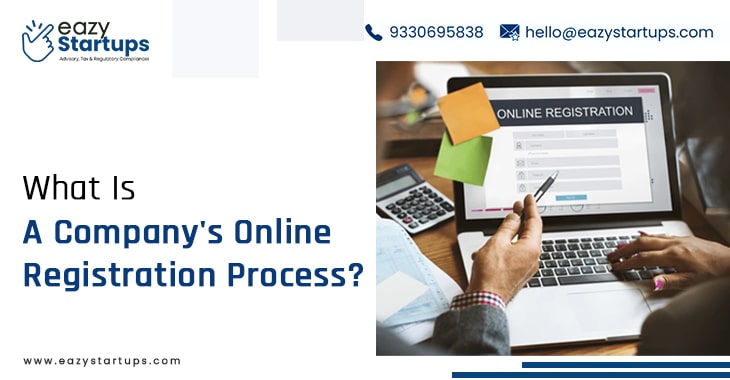Setting out to start a business is an exciting and important undertaking. The online registration process has simplified the formation of firms in the current digital era, making it more accessible and effective. This blog post will walk you through the entire process of registering a corporation online, emphasizing the important steps and things to remember to ensure the registration goes smoothly. If you opt for seamless Online Company Registration or Business Registration Online, contact Eazy StartUp.
Let’s dive into the discussion:-
- Study and Organizing
- Choose a Business Name
- Register for an Online Account
- Complete the Application Form
- Provide Necessary Documentation
- Pay Registration Fees
- Await Confirmation and Approval
- Obtain Necessary Licenses and Permits
- Establish Business Activities
- Ongoing Compliance and Reporting
Study and Organizing:
Planning and extensive research are necessary before beginning the registration process. Choose a business structure that best meets your needs, whether a corporation, limited liability company (LLC), partnership, or sole proprietorship. Examine each structure’s financial and legal ramifications to be sure it supports your company’s objectives.
Choose a Business Name:
Choosing a distinctive and significant company name is an essential first step. Verify that your chosen name conforms with all naming laws in your location and isn’t currently being used by another business. Most registration services offer resources to assist with name selection and availability checks.
Register for an Online Account:
You will normally need to register for an account on the official website of your nation or region to begin the online registration procedure. You can submit and track documents linked to registration with this account.
Complete the Application Form:
You must complete the online application form after logging in. Important details about your firm, such as its address, ownership information, and type of operations, will be gathered by this form. Since this information will be needed for official documentation, take your time and make sure it is accurate.
Provide Necessary Documentation:
There is a need for certain documents for the registration process, and they will definately send with your application. Common paperwork includes the business owners’ identification documents, the business’s proof of address, and any other documentation that may be needed based on the particulars of the business structure. Verify that every document complies with the platform’s standards and is current.
Pay Registration Fees:
You must pay the registration fees for the majority of online registration procedures. The fees, which vary according to jurisdiction and business structure, cover the administrative expenses incurred in completing your application. Prepare to use approved payment methods when making online purchases.
Await Confirmation and Approval:
The registration authorities will examine your documents after submitting your application and payment. Although the clearance procedure can take a while, the online portal will usually provide you with a confirmation of your registration. This acknowledgment functions as formal proof of your business’s existence.
Obtain Necessary Licenses and Permits:
To lawfully do business, you could require extra licenses and permits, depending on the type of your enterprise. You may typically start the application process for these permissions through the same site, and the online registration platform may guide you on the kinds of licenses needed.
Establish Business Activities:
Now that your business has been formally registered, it’s time to start running your activities. It entails establishing a business bank account, acquiring a tax identification number, and handling other operational needs unique to your sector.
Ongoing Compliance and Reporting:
The process of registering a company is a continuous one that requires continuing reporting and compliance obligations. Remain current on tax duties, annual filing requirements, and any regulatory changes that can impact your company. Most registration platforms offer a dashboard where you may keep track of these continuing commitments.
Conclusion
Registering your company online is a crucial first step in making your business idea a reality. You may confidently work through the procedure through a systematic and knowledgeable approach. If you opt for seamless Online Company Registration or Business Registration Online, contact Eazy StartUp.





Recent Comments